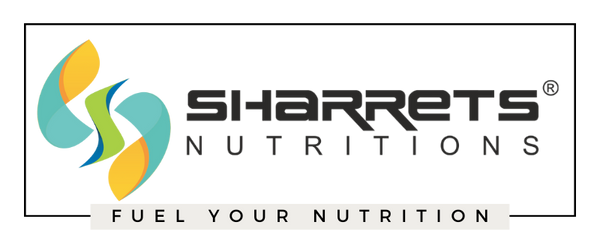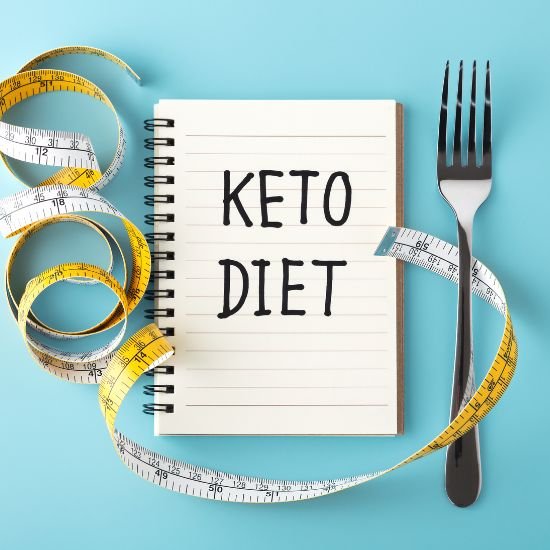
Kick start Keto - The Keto Introduction.
Share
Your guide to Keto ! FAQs about Ketosis .
What is Keto?
Keto or the Ketogenic Diet, is a type of low-carb diet that is different from all other low-carb diets. The main difference is the degree of carbohydrate restriction along with the increase in dietary fat. This is why you typically hear Keto referred to as a low-carb/high-fat diet. So, what is the point of this low carb diet? Let’s take a look at how Keto works.
How Does Keto Work?The purpose of Keto is to switch our body’s primary fuel source from glucose to fat and ketones, a phenomenon known as ketosis. What does all that mean? Quick science lesson. If your diet contains carbohydrates, then your body’s primary fuel source is glucose. When your pancreas senses the rise in blood glucose, it secretes insulin and insulin drives glucose into every cell in your body. Once in the cell, your body can convert glucose into energy that makes your limbs move, your heart beat, and your brain think.
GLUCOSE METABOLISM
1. CARBS ARE BROKEN DOWN INTO GLUCOSE.
2. BETA CELLS IN THE PANCREAS SECRETE INSULIN
3. INSULIN DRIVES GLUCOSE INTO THE CELLS.
4. GLUCOSE IS CONVERTED INTO ENERGY TO BE USED BY THE BODY
Your body is very good at using glucose for fuel and since your body likes to take the path of least resistance, it will always use glucose for energy when it is available. However, when you avoid carbohydrates, your body has to adjust and find an alternative fuel source to replace glucose. Low carbohydrate consumption is followed by low insulin levels, which means you’ll burn more fat — both stored fat and dietary fat.
While your body can use fat to fuel nearly all the cells in your body, you can’t use fat to fuel your brain. Reason for concern right? Not quite! The human body possesses a unique ability to convert fat into an additional energy source known as ketone bodies.
Your body produces ketones in your liver from stored or dietary fat and shuttles them into your bloodstream where they can travel to your brain for energy. In fact, your brain prefers using ketones for energy over glucose.This increase in ketones in the blood is known as ketosis!
KETOSIS !
|
CARB RESTRICTION |
|
LOW BLOOD GLUCOSE/LOW INSULIN |
|
FAT BURNING ELEVATED |
|
KETONES PRODUCED IN THE LIVER |
|
SHUTTLED TO BRAIN FOR ALTERNATIVE FUEL |
So let’s go over this again:
|
KETO |
A low carb diet used to change our body’s primary fuel sourcefrom glucose to fat and ketones. |
|
KETOSIS |
A metabolic state that occurs when you restrict carbohydrates. Ketosis is characterized by low blood glucose, low insulin, and an increase in fat burning and ketone production. |
|
WHAT ARE KETONES ? |
Ketones are energy molecules produced by your liver to provide an alternative fuel source to glucose. |
If you read the last section carefully then you may have noticed that one of the keys to ketosis is restricting carbohydrates. You can get into a ketogenic state by fasting or through a carb-restricted diet — like the keto diet.
At this point, you are probably wondering what you are going to be eating on this diet. We will get into that soon, but for those of you who understand what carbs are, you are probably starting to conclude that this diet will involve cutting out bread, pasta, rice, potatoes, oats, sugar, and yes — even fruit! So why the heck would you do that?
What Are the Benefits of Keto?
One of the reasons why keto is so popular is because when you transition your body’s primary fuel source from glucose to fat, you tend to see awesome changes in your body composition. And that’s because you’re now burning fat for energy and holding onto lean muscle. This switch from using glucose to fat burning has other benefits as well, like:
BENEFITS OF KETOSIS
|
INCREASED ENERGY |
|
IMPROVED BRAIN FUNCTION |
|
INCREASED EXERCISE ENDURANCE |
|
IMPROVED SATIETY/FULLNESS |
|
REDUCTIONS IN SUGAR CRAVINGS |
|
IMPROVED MOOD |
While keto is popular for increasing energy, brain function, and promoting weight loss, it’s often overlooked for its ability to improve longevity and maybe even contribute to the management of some disease symptoms.
Say what? Let’s go one level deeper into the benefits of keto, then we promise we will get you started on the keto diet.
Yes, glucose tends to be your body’s primary fuel source. But over time, chronically high carbohydrate consumption — especially processed carbs and sugar — can become a huge problem.
Remember insulin? Insulin is the hormone that drives glucose from digested carbohydrates into your cells to be used as energy. Insulin does this by communicating with cell receptors. However, chronic high carb consumption will damage this glucose-insulin-energy communication system.
Chronic high carb consumption causes the pancreas to secrete more insulin to help push that glucose into the cell, which can cause further damaged communication, leading to a cycle known as insulin resistance.
In fact, some of the most common conditions are connected to both insulin resistance AND inflammation.
Since keto transitions your body’s fuel source away from glucose, it is common to see reductions in chronic high blood sugar and improvements in insulin resistance. This, in addition to an increase in circulating ketones, can actual help combat systemic inflammation.
Better glucose uptake and more ketones make the ketogenic diet a promising new way to help improve disease symptoms and maybe even prevent various disease.
Here are some of the potential therapeutic applications that researchers are excited about:
-
Epilepsy • Diabetes • PCOS • Certain Types of Cancer
-
Alzheimer’s • Parkinson’s • M.S. • Mood Disorders
-
Autism • Digestive Disorders • Concussions • Many More!
So at this point, you are probably starting to understand the benefits of this diet a little better. But you may find yourself with a few of the following questions about keto:
How is Keto different from Atkins ?
You may be wondering how Keto is different from Atkins. While both diets may restrict carbohydrates to similar levels, Atkins tends to be a higher protein, low carb diet, while Keto is more of a high fat, low carb diet.
The Atkins Diet also allows for a reintroduction of carbohydrates which is not the goal of a Keto Diet since reintroducing carbohydrates would kick your body out of ketosis.
It is important to note that the optimal macronutrient range for Keto varies for each person and is goal specific, meaning that some people may consume a higher protein version of Keto which is referred to as Modified Atkins. This approach still puts a heavier emphasis on including healthy fats compared to traditional Atkins.
Is Ketosis the same thing as Ketoacidosis?
Many people fear that Keto will lead to kidney damage, this is not the case. Remember that nutritional ketosis is much different from diabetic ketoacidosis (DKA). DKA can create an acidic environment that can lead to kidney damage; however this does not occur during nutritional ketosis. In fact, Keto has been shown to improve kidney health in those suffering from diabetic related kidney damage.
If you are fearful for the health of your kidneys then it actually may be more beneficial for you to start a Ketogenic Diet since there are several ways Keto can contribute to improved kidney health.
Is Keto safe / healthy ?The Ketogenic Diet is not a new diet and has actually been used since the 1920s for treating various conditions. This dietary approach has even been established as safe for women, children, and elderly.
Fat is the primary reason why Keto is thought to be unsafe; however, it is now being recognized that the consumption of healthy fat does not pose the same risk we once thought it did. In fact, fat actually has a lot of benefits.
There are a couple conditions where using a Keto Diet may not be advised:
-
Pyruvate carboxylase deficiency
-
Porphyria
-
Fat metabolism disorders
Isn’t consuming fat bad for you?
Fat has long been demonized as being the cause for poor health, especially heart health. However, most of this is based on flawed research from the 60s, 70s, and 80s, that has shaped our dietary recommendations and put the emphasis on limiting our fat intake.
The truth is that fat is not the culprit for poor health, especially when consumed independent of carbohydrates. In fact, fat has many health benefits and not eating enough can lead to impaired hormone production and brain health among many other problems.
It is important to point out that not all fat is created equal. Trans fats and hydrogenated/partially hydrogenated fat are pro inflammatory and should be avoided at all costs. These fats can be found in a lot of processed foods and vegetable oils and can lead to many health problems.
Is red meat is good or bad ?Like fat, red meat has been demonized for being bad for our health. Red meat actually contains many beneficial nutrients and has a great place in a Ketogenic Diet.
It is important to make sure that red meat is not the only meat you are consuming on Keto. Adding fish into your diet in conjunction with red meat can lead to a much more balanced fat intake that can improve overall health.
It is also important to point out that the quality of your meat is important. Consuming low quality, processed meat is not the same as consuming high quality grass-fed/grass-finished meat.
Is Keto the same as Paleo?The main difference between Keto and Paleo is the degree of carbohydrate restriction. While Paleo can be a low carb diet, the emphasis is not on restricting carbs but rather on avoiding certain foods such as grains, legumes, dairy, processed foods, etc.
Many of these foods are also avoided on Keto; however, Keto also avoids fruit which the Paleo diet encourages. Fruit contains sugar, specifically fructose, which is what prevents Paleo from being as low carb of a diet as Keto and prevents people from entering ketosis.
How Do You Follow A Keto Diet?
So far we talked a little about what foods you are going to have to avoid on Keto. Essentially, all foods that are high in carbohydrates. Here is a short list of some of those foods:
AVOID : GRAINS, OATS, BREAD ,CORN ,RICE , BEANS , POTATOES , MOST FRUITS, SUGAR.
But keto isn’t just about what you can’t have. What you do eat is equally if not more important which is why we put more of an emphasis on that part of the diet. Let’s take a quick look at the foods you’ll want to stock up on:
APPROVED : MEAT , FISH EGGS AVOCADOS , NUTS/ SEEDS ,QUALITY OILS (MCT, COCONUT, AVOCADO)
Now you can probably start to understand the “low-carb, high-fat” explanation of a keto diet. This is where most people tend to stop in their understanding of keto. But there’s so much more to a healthy keto diet.
At Sharrets , we do not view keto as a weight loss diet, in fact we don’t view keto as a diet at all. Keto is a lifestyle. It’s a way of life where you’re committed to improving your energy, brain function, and longevity by changing your diet and lifestyle — even your mindset.
We want you to think of keto as a lifestyle, too. This is why we put together our Keto Kickstart Plan. Whether you are new to keto or have been following keto for years, this program offers an optimized keto diet plan for 30 days.
For 30 days, you’ll have all the guidelines and tools you need to follow the keto diet as perfectly as you can. You’ll also learn tips and tricks to make keto sustainable over the long-term. The keto diet is more than just a short-term diet or fad. When you do it right, it’s a long-term option to help maintain weight loss, gain muscle, and have better brain function.
Starting Keto the Perfect Way
The way you start your keto diet journey can determine your success with developing the diet as a lifestyle. So, it’s important to start off on the right foot.
To get the most out of this program, we simply ask for 30 days.
During these 30 days, you’ll focus on things like:
-
Transitioning your energy source from glucose to fat and ketones
-
Improving the quality your foods
-
Eating real whole foods
-
Reducing your sugar cravings
-
Getting in some movement
-
Turning this diet into a lifestyle
Why Your First 30 Days Are So Important ? On the keto diet, you’re literally changing your body’s main fuel source from glucose-gobbling to fat-loving. This period of time is called keto-adaption and it takes a little time and patience.
What is Keto-Adaptation? Keto-adaptation is the period of time during which your body is transitioning to becoming efficient at burning fat, producing ketones, and using those ketones as fuel. Sounds like ketosis right? It’s actually a little different.Ketosis is the state when you have elevated ketones in your blood, aka your body is simply producing ketones. You can produce ketones after just an overnight fast. It’s possible you have ketones in your blood right now — even if you’re not on a ketogenic diet. However, as you continue to restrict carbohydrates, your ketone production will increase.
Since these ketones are a little foreign to your body, it can take a bit of time to adjust to using them as fuel.
This adjustment period is known as the keto-adaptation period. Once your body is efficient at both producing and utilizing these ketones, you are keto-adapted, or fat-adapted.
Keto-adaptation looks different for everyone. But, you should achieve some degree of keto-adaptation after 30 days.
The biggest challenge with the keto diet is that most people never make it through the keto-adaptation phase. Or, they never do keto correctly to begin with and totally miss out on any benefits.
This is where the Keto Kickstart comes in. You’ll get everything you need to do the keto diet right for the first 30 days — including resources, a supplement guide, and so much more.
KETOSIS VS. KETO ADAPTATION
KETOSIS
Elevated blood ketones
Not necessarily utilizing ketones
Can occur from an overnight fast
KETO ADAPTION
Elevated blood ketones
Utilizing these ketones effectively
Takes on average 30 days
Dude, I’ve already followed Keto for 30 days, I’m already Keto-Adapted
Even if you think you are already keto-adapted, chances are this program could still be a good fit for you. Maybe you have been following a Lazy Keto Diet, you are stuck at a plateau, or you’ve never truly followed keto the right way. All of these situations would make this program a great fit for you.
LAZY KETO VS. KETO KICKSTART
LAZY KETO
Quality is not important
Consumes processed foods
Low in micronutrients
KICK START
Food quality is always the priority
Consumes real, unprocessed, single ingredient foods
High in micronutrients .
The Keto Kickstart
So, what does the keto diet actually look like?
When you’re first learning about the keto diet, you may become preoccupied with your macronutrient ratios.
If you don’t know what macronutrients are, you can click to learn more, but you won’t need to worry about those yet. The focus of the Keto Kickstart is not on your macronutrient percentages. Diets that are only based on macronutrient content fail to address the quality of the foods you are putting in your body.
What you put into your body matters!
Many people do not understand that the quality of the food you eat directly influences how you feel on a daily basis as well as your long-term health. So, eating fresh, real food is the most important part of building a sustainable keto lifestyle.
One of the most powerful tools you possess to change your health is food. The foods you eat are the building blocks for your cells and influence every function in your body. Your physical, physiological, and emotional health are all dictated by the food choices you make every day.
The Keto Kickstart is designed to teach you to eat high-quality, nutrient dense food to improve your health from the inside out. While weight loss is a likely side effect of keto, it is not the ultimate goal. The goal of this program is to optimize your health by stabilizing your blood sugar, eliminating cravings, improving your overall health, and changing the way you think about food.
Remember, the purpose of your Keto Kickstart is to promote a long-term lifestyle change. Here is a basic outline of what your next 30 days are going to look like:
1. EAT A VARIETY OF HIGH-QUALITY FOODS
This is the number one priority. Eat a variety of high-quality meat, seafood, vegetables, and fat for 30 days. You will not be tracking calories, macronutrients, or using a food scale. Your only job is to eat real food until you’re satisfied.
2. SUPPLEMENT ACCORDINGLY.
Using the right supplements will improve your experience with keto. That includes supplements like exogenous ketones, collagen, MCT fatty acids, and more. Don’t worry — we created a product bundle specifically for this program with everything you need to thrive during your first 30 days.
3. MOVE DAILY
You were not meant to be sedentary. Our bodies thrive when movement is a daily habit. Move your body for 30 minutes everyday for the next 30 days. This can be walking, yoga, running, swimming, resistance training, etc. Whatever it is, just move!
4. PRACTICE HEALTHY & GOOD LIFESTYLE.
Nutrition and exercise are two of the most important factors to longevity, brain function, and long-term health. However, there are other lifestyle factors that will play a crucial role in your ability to see results and experience all the benefits that keto has to offer. Sleep, hydration, and stress management are also key components to maximize the next 30 days. Check out our Lifestyle Guide for more tips on lifestyle habits.
5. COMMIT 100%
There’s only one way to get lasting change when it comes to diet, performance, and body composition, and that’s to permanently change the way you think about food. There is no set meal plan, macronutrient guidelines, or calorie counting because we believe that if you fuel with real high-quality foods your body will take care of the rest. All you need to do is eat ONLY the foods on the approved shopping list. No cheat days or one-offs during the next 30 days. The only way to truly see all the amazing benefits of keto is stick to it. You can do this! ‘’
Your Keto Kickstart
Finally, let’s get you started! The first step is preparing!
PLAN YOUR FOOD Figure out what you can eat and get help planning your meals and choosing high quality foods .
TOOLS you need some new cooking tools.
GET YOUR SUPPLEMENTS Supplements are key to success on Keto.
















